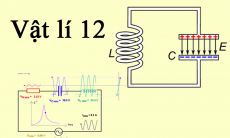Read the following passage and mark the letter A, B, C, or D on your answer sheet to indicate the correct answer to each of the questions from 35 to 40.
Happiness and sadness are experienced by people in all cultures around the world, but how can we tell when other people are happy or despondent? It turns out that the expression of many emotions may be universal. Smiling is apparently a universal sign of friendliness and approval. Baring the teeth in a hostile way, as noted by Charles Darwin in the nineteenth century, may be a universal sign of anger. As the originator of the theory of evolution, Darwin believed that the universal recognition of facial expressions would have survival value. For example, facial expressions could signal the approach of enemies (or friends) in the absence of language.
Most investigators concur that certain facial expressions suggest the same emotions in all people. Moreover, people in diverse cultures recognize the emotions manifested by the facial expressions. In classic research Paul Ekman took photographs of people exhibiting the emotions of anger, disgust, fear, happiness, and sadness. He then asked people around the world to indicate what emotions were being depicted in them. Those queried ranged from European college students to members of the Fore, a tribe that dwells in the New Guinea highlands. All groups, including the Fore, who had almost no contact with Western culture, agreed on the portrayed emotions. The Fore also displayed familiar facial expressions when asked how they would respond if they were the characters in stories that called for basic emotional responses. Ekman and his colleagues more recently obtained similar results in a study of ten cultures in which participants were permitted to report that multiple emotions were shown by facial expressions. The participants generally agreed on which two emotions were being shown and which emotion was more intense.
Psychological researchers generally recognize that facial expressions reflect emotional states. In fact, various emotional states give rise to certain patterns of electrical activity in the facial muscles and in the brain. The facial-feedback hypothesis argues, however, that the causal relationship between emotions and facial expressions can also work in the opposite direction. According to this hypothesis, signals from the facial muscles (“feedback) are sent back to emotion centers of the brain, and so a person’s facial expression can influence that person’s emotional state. Consider Darwin’s words: “The free expression by outward signs of an emotion intensifies it. On the other hand, the repression, as far as possible, of all outward signs softens our emotions.” Can smiling give rise to feelings of good will, for example, and
frowning to anger?
Psychological research has given rise to some interesting findings concerning the facial-feedback hypothesis. Causing participants in experiments to smile, for example, leads them to report more positive feelings and to rate cartoons (humorous drawings of people or situations) as being more humorous. When they are caused to frown, they rate cartoons as being more aggressive.
What are the possible links between facial expressions and emotion? One link is arousal, which is the level of activity or preparedness for activity in an organism. Intense contraction of facial muscles, such as those used in signifying fear, heightens arousal. Self-perception of heightened arousal then leads to heightened emotional activity. Other links may involve changes in brain temperature and the release of neurotransmitters (substances that transmit nerve impulses.) The contraction of facial muscles both influences the internal emotional state and reflects it. Ekman has found that the so-called Duchenne smile, which is characterized by “crow’s feet” wrinkles around the eyes and a subtle drop in the eye cover fold so that the skin above the eye moves down slightly toward the eyeball, can lead to pleasant feelings.
Ekman’s observation may be relevant to the British expression “keep a stiff upper lip” as a recommendation for handling stress. It might be that a “stiff” lip suppresses emotional response - as long as the lip is not quivering with fear or tension. But when the emotion that leads to stiffening the lip is more intense, and involves strong muscle tension, facial feedback may heighten emotional response.
Câu 35 : The word “ despondent ” in the passage is closest in meaning to _______________.
Hãy suy nghĩ và trả lời câu hỏi trước khi xem đáp án
Lời giải:
Báo sai- curious (adj): tò mò
- unhappy (adj): buồn, bất hạnh
- thoughtful (adj): trầm tư
- uncertain (adj): không chắc chắn
“Happiness and sadness are experienced by people in all cultures around the world, but how can we tell when other people are happy or despondent?”
(Con người từ khắp mọi nền văn hóa trên thế giới đều trải qua niềm vui và nỗi buồn, nhưng làm thế nào chúng ta có thể biết được khi nào người khác vui hay buồn?)
Do đó: despondent = sad, unhappy
Chọn B
Câu 36 : The author mentions “Baring the teeth in a hostile way ” in order to_______________.
Hãy suy nghĩ và trả lời câu hỏi trước khi xem đáp án
Lời giải:
Báo saiTác giả đề cập “Baring the teeth in a hostile way - nhe răng một cách thù địch” để __________
A. phân biệt một ý nghĩa có thể của một biểu hiện khuôn mặt đặc biệt với những ý nghĩa khác của nó
B. ủng hộ thuyết tiến hóa của Darwin
C. cung cấp ví dụ về biểu hiện khuôn mặt mà hầu hết mọi người đều hiểu
D. đối chiếu một biểu hiện khuôn mặt mà mọi người dễ hiểu với những biểu hiện khuôn mặt khác
Dẫn chứng: It turns out that the expression of many emotions may be universal. Smiling is apparently a universal sign of friendliness and approval. Baring the teeth in a hostile way, as noted by Charles Darwin in the nineteenth century, may be a universal sign of anger.
(Hóa ra biểu hiện của nhiều cảm xúc có thể phổ quát. Mỉm cười có vẻ là một dấu hiệu chung cho sự thân thiện và sự đồng tình. Nhe răng một cách thù địch, như Darwin đã ghi nhận vào thế kỉ 19, có thể là một dấu hiệu chung cho sự tức giận.)
⇒ “Smiling, baring the teeth” là các ví dụ minh chứng cho việc biểu hiện trên khuôn mặt chung với tất cả mọi người.
Chọn C
Câu 37 : The word “ them” in the passage refers to __________.
Hãy suy nghĩ và trả lời câu hỏi trước khi xem đáp án
Lời giải:
Báo saiTừ “them” trong bài đọc đề cập đến____________.
A. những cảm xúc
B. con người
C. những bức ảnh
D. các nền văn hóa
Dẫn chứng: “In classic research Paul Ekman look photographs of people exhibiting the emotions of anger, disgust, fear, happiness, and sadness. He then asked people around the world to indicate what emotions were being depicted in them,”
(Trong nghiên cứu kinh điển, Paul Ekman đã chụp những bức ảnh về con người biểu lộ sự tức giận, sợ hãi, hạnh phúc và buồn bã. Sau đó, ông ấy yêu cầu mọi người khắp thế giới chỉ ra những cảm xúc gì đang được miêu tả trong các bức ảnh.)
Do đó: them = photographs
Chọn C
Câu 38 : According to paragraph 2, which of the following was TRUE about the Fore people of New Guinea?
Hãy suy nghĩ và trả lời câu hỏi trước khi xem đáp án
Lời giải:
Báo saiTheo đoạn 2, điều nào sau đây ĐÚNG về bộ tộc Fore ở New Guinea?
A. Họ không muốn trưng bày những bức ảnh.
B. Họ nổi tiếng với kĩ năng kể chuyện.
C. Họ biết rất ít về văn hóa Phương Tây.
D. Họ không khuyến khích biểu hiện cảm xúc.
Dẫn chứng: “All groups, including the Fore, who had almost no contact with Western culture, agreed on the portrayed emotions.”
(Tất cả các nhóm, bao gồm cả tộc Fore mà gần như không tiếp xúc với văn hóa Phương Tây, đều đồng tình về những cảm xúc được miêu tả.)
Chọn C
Câu 39 : According to the passage, what did Darwin believe would happen to human emotions that were not expressed?
Hãy suy nghĩ và trả lời câu hỏi trước khi xem đáp án
Lời giải:
Báo saiTheo bài đọc, Darwin tin điều gì sẽ xảy ra với những cảm xúc con người mà không được biểu lộ?
A. Chúng sẽ giảm bớt cường độ hơn
B. Chúng sẽ kéo dài hơn bình thường
C. Chúng sẽ gây ra những vấn đề về sau
D. Chúng sẽ trở nên tiêu cực hơn
Dẫn chứng: “The free expression by outward signs of an emotion intensifies it. On the other hand, the repression, as far as possible, of all outward signs softens our emotions.”
(Tự do biểu lộ cảm xúc ra các dấu hiệu bên ngoài làm cho cường độ cảm xúc mạnh lên. Mặt khác, sự kìm nén cảm xúc ra bên ngoài càng lớn sẽ làm giảm bớt cường độ cảm xúc của chúng ta.)
Chọn A
Câu 40 : According to the passage, research involving which of the following supported the facial-feedback hypothesis?
Hãy suy nghĩ và trả lời câu hỏi trước khi xem đáp án
Lời giải:
Báo saiTheo bài đọc, nghiên cứu liên quan đến điều nào sau đây ủng hộ giả thuyết phản ứng bằng cơ mặt?
A. Những phản ứng của con người trong thí nghiệm đối với phim hoạt hình
B. Xu hướng của con người trong thí nghiệm cộng tác với nhau
C. Sự giải phóng các chất dẫn truyền thần kinh của con người suốt thí nghiệm
D. Những ảnh hưởng lâu dài của việc kìm nén cảm xúc
Dẫn chứng: “Psychological research has given rise to some interesting findings concerning the facial-feedback hypothesis. Causing participants in experiments to smile, for example, leads them to report more positive feelings and to rate cartoons as being more humorous.”
(Nghiên cứu tâm lý đã mang lại một số phát hiện thú vị liên quan đến giả thuyết phản ứng bằng cơ mặt. Chẳng hạn như, việc khiến những người tham gia thí nghiệm mỉm cười khiến cho họ có cảm xúc tích cực hơn và đánh giá phim hoạt hình hài hước hơn.)
Chọn A
Đề thi giữa HK1 môn Tiếng Anh 11 Cánh diều năm 2023-2024
Trường THPT Nguyễn Huệ











